Microsoft Visio is a diagramming tool that can design almost any type of workflow. Since Microsoft Visio has been around for over 15 years, there are a lot of misconceptions and misnomers about what the software can actually do. One of the most common misconceptions is that Visio is more of a pretty drawing tool for designers rather than something that you can actually use to design database workflows.
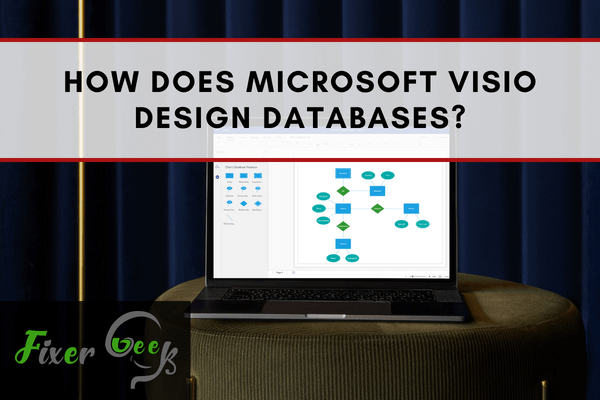
Database stores, organize, and manipulates your data and relates them in any format you want. Microsoft Visio can accurately create those relations if you instruct it properly. If you don’t have any previous work experience with Visio you need proper direction to design a database.
Here I’ll discuss how to design databases in Microsoft Visio. Please follow the instructions accordingly to successfully designing a database.
Before You Get Started
Microsoft Visio comes with Office 365 packages or if you’ve manually installed it. You need Microsoft Access or id to create or edit any document in Visio workspace. You must have an Office 365 id to access the software and create your databases.
If you know the basics of Microsoft Visio software it’ll help you to follow this instruction set. Designing a database is not that easy if you don’t have any idea of your data type. So, first, you need to brainstorm, think about what you want to do. With which types of data, you are working. If you can please write them down for organizing the data.
So the necessary steps are
- You need a working open PC.
- You need Microsoft 365 access for using Visio.
- Organize your data’s for creating the database
Process of Visio database design
There are a lot of steps and thousands of combinations a Visio database can be built. But I’ll discuss briefly and simply the basic database design pattern in this software. Carefully follow the below steps to successfully design a database:
- First, Open Visio app from your PC by logging in to your Microsoft 365 account. And click on the Database Model Diagram (US units) to open a database model.

- Then, click on Create from the right bottom corner as shown below.
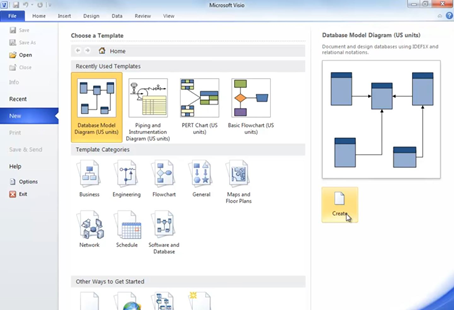
- After that, a new drawing sheet will open where you can create various database relations dragging and dropping from the left menu bar options.
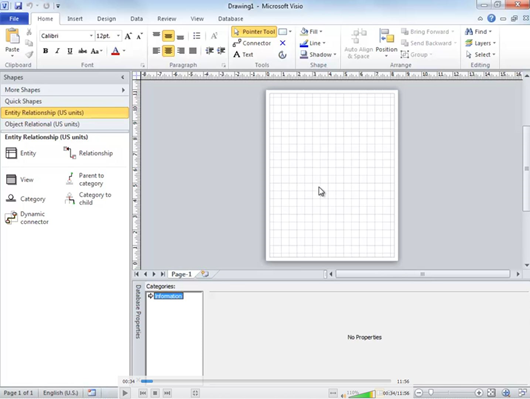
- For creating the first entity table of our database you have to drag the Entity-relationship to the blank drawing sheet with left mouse hold.
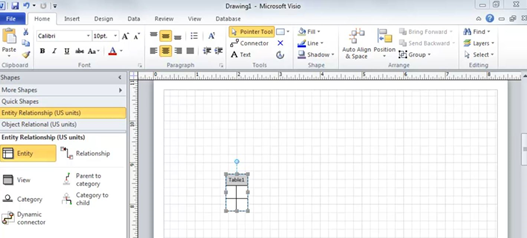
- When you click the table from the menu below you can change the table's Physical name or Conceptual name.
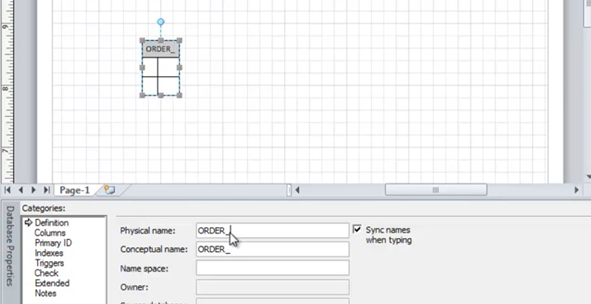
- You can also add columns by clicking columns under category and adding additional columns under the physical names option. For example here, Order ID, SKU, Quantity, Price, and Extended price columns are added.
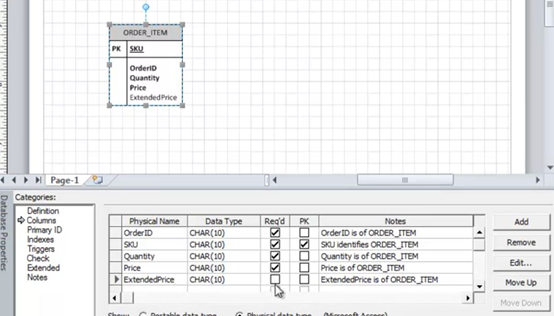
- You can check all the columns required as Req’d and the common or relational column as PK or primary column.
- Clicking inside the data type cell will bring an arrow from where you can change the type of your data.

- Choose the data type as fits, for example, choose INTEGER for quantity data.
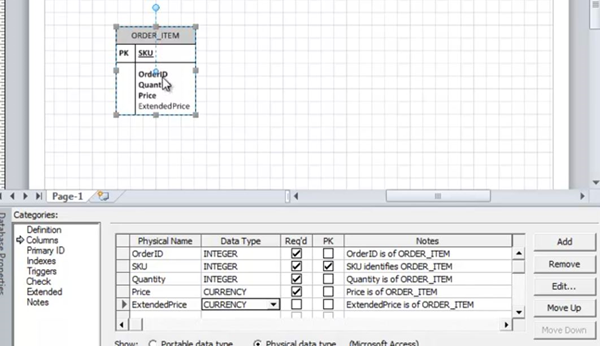
- Create another table by dragging an entity on the same page as the previous table. Because we need at least two tables for establishing a relationship between data.
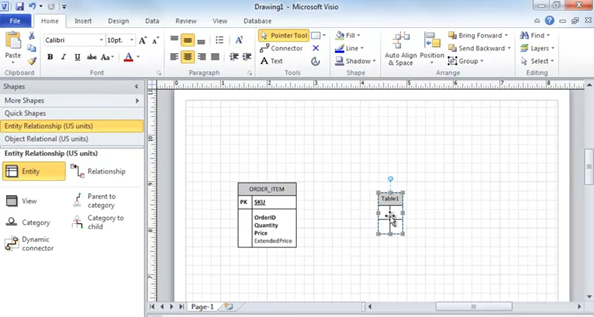
- Following the steps of 5-9, you can create the columns and give them their types easily. In both tables observe we’ve kept Order ID as PK to build a relation between these tables.
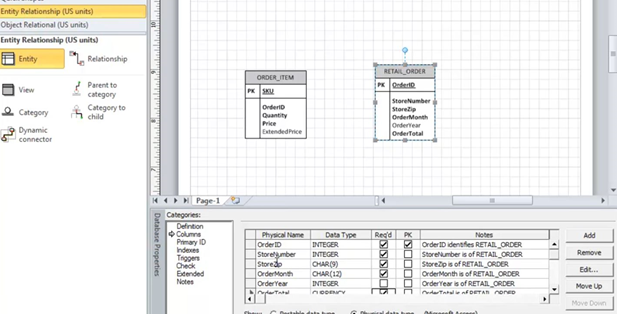

- Click Primary ID under categories from available columns select a new column and Add> if you want a new primary key.

- Under entity-relationship, you’ll find the Relationship button and drag it to the drawing sheet for creating a relationship between the common field of both tables.
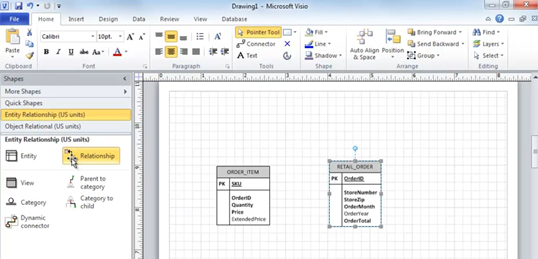
- Drag the relationship link to each tables holding the left mouse button to make the connection.
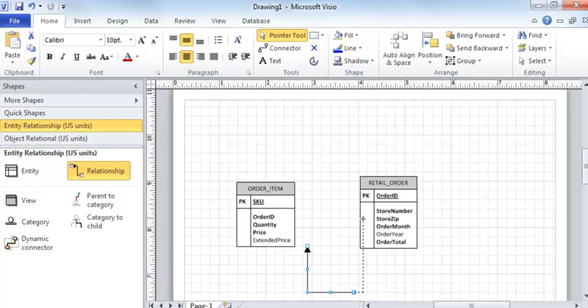
- The link will be created via common field Order ID.
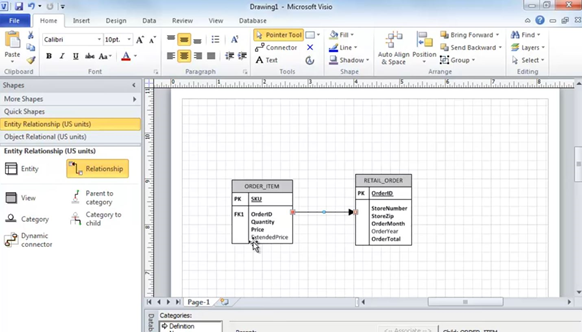
So, this is how a database design can be started, and using the countless features Visio offers we can do more things with our database. But if you follow these basic steps you wouldn’t have any problem with the basic Visio database design anymore.
Summary: Does Microsoft Visio design databases
- The answer to your question is yes.
- Microsoft Visio can be used for designing databases.
- There are many advantages of using Microsoft Visio for designing databases.
- Some of these advantages are its ease of use, MS Excel integration and availability on different platforms.
- Microsoft Visio helps one in creating two types of database models.
- These are logical and physical database models.
- The logical database model basically focuses on what data is needed in the database and how this data is related to one another.
- The physical database model focuses on how the data will be stored in the database.
- Microsoft Visio follows the object-relational paradigm often encountered in modern databases.
- Microsoft Visio can be used to design a database and has several advantages.